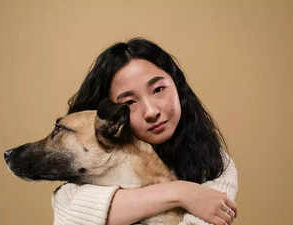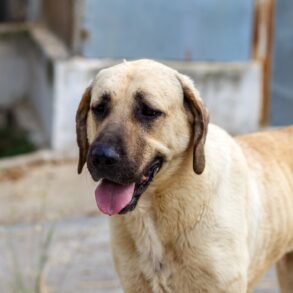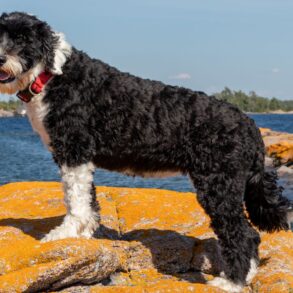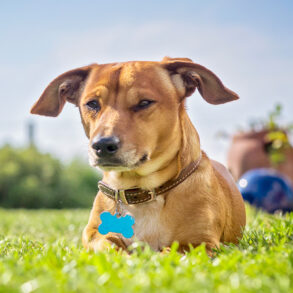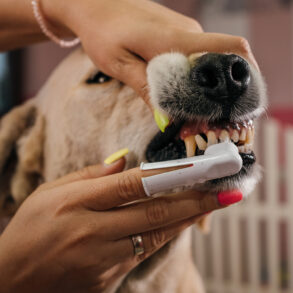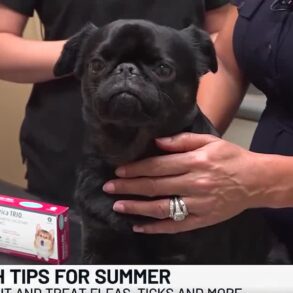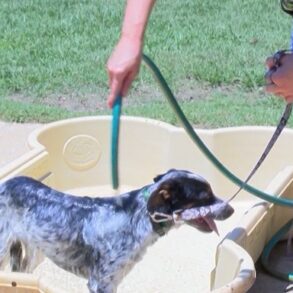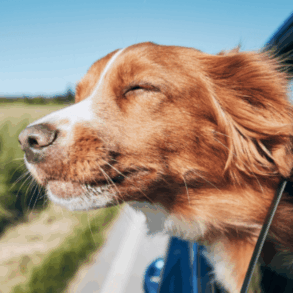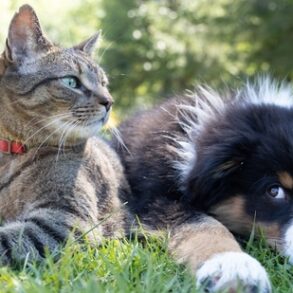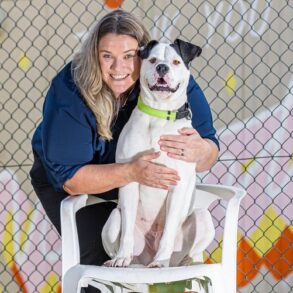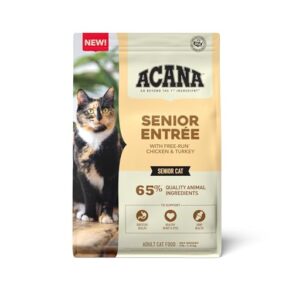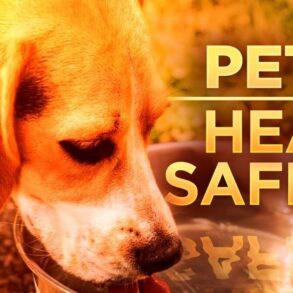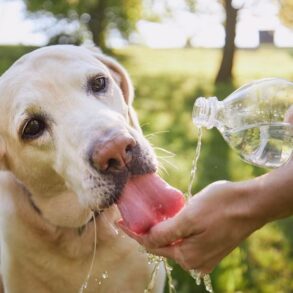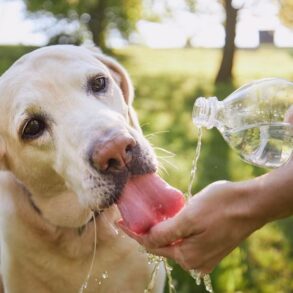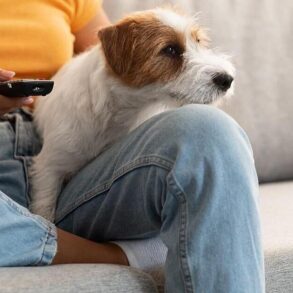Summer is here — and it’s a hot one. Finding ways to avoid the sweltering summer temperatures can weigh heavily on your mind, especially if you have a pooch that needs frequent walks. Since dogs can develop potentially fatal heat-related illnesses easily, it’s important to take the necessary precautions before, during and after exercise to keep your dog healthy.
Yahoo Canada spoke to registered vet technician and Canine Master Groomer Michelle Kenny to help you make smarter, safer choices for your pup this summer. Keep reading to learn more about keeping your dog cool this summer and how to recognize when they may start to overheat.
When is it too hot to walk your dog?
If there’s a heat advisory, “that’s a clear sign to avoid exercising your dog,” Kenny says.
According to Kenny, experts don’t want to create “a false sense of security” by listing a safe temperature. Basically, it all depends on the individual pup.
“Some dogs could exercise themselves to the point of heat exhaustion on a day that you might not think is very hot,” she explains.
Factors to consider before walking your dog in the heat
When looking at your dog’s risk for heat-related illnesses, like heat exhaustion and heat stroke, there are a few different traits you’ll want to think about:
-
Age: Puppies, like babies and children, have a harder time thermoregulating than adult dogs. They tend to be “very active and may not know when to slow down,” Kenny says. Senior dogs may also struggle to regulate body temperature and are more likely to have underlying health concerns, which put them at higher risk for complications if they develop heat exhaustion.
-
Weight: Obese dogs have “an insulating layer of fat cells,” which brings their body temperature higher on walks.
-
Face type: Short-nosed, flat-faced dogs like Boxers, Pugs, English and French Bulldogs and more may have difficulty panting enough to cool off.
-
Leg length: Dogs with shorter legs will “need to work a lot harder to get from point A to point B than dogs with longer legs.” That puts them at greater risk of overheating.
-
High-risk conditions: If your dog has cardiac or respiratory issues, they may be predisposed to heat stress.
How do I know if my dog is starting to overheat?
When you’re out and about with your pooch, keep an eye on their panting. Dogs pant to help cool themselves off, which is totally normal. But if they begin panting excessively or breathing noisily, that could be a bad sign.
“They might drool or have a foamy substance coming out of their nose,” says Kenny. If you notice any of these signs, it’s time to head indoors ASAP.
“As things progress, they could become unsteady on their feet or seem disoriented, exhibit vomiting or have a glazed look to their eyes,” she explains. Their gums might even start to turn blue, purple or bright red. These symptoms warrant an emergency trip to the vet because, without treatment, heat-related illnesses can lead to “multi-organ failure” and death.
How to keep your dog cool on summer walks
There are a few steps you can take to reduce your dog’s risk for heat stress:
-
Walk early or late: Typically, early in the morning and later in the evening are the coolest times of day.
-
Stick to shady areas: Shaded pavement can be up to 25°C cooler than pavement that’s in direct sunlight.
-
Bring water: Stop for frequent water breaks as a prevention technique. But “if your dog is already overheating, it’s unlikely that they’ll want to take water,” says Kenny.
-
Pair water with a fan: Before and after a walk, douse your dog with cool water and aim a handheld fan in their direction. Just avoid trying to cool them too quickly. An ice bath, for example, “could cause their blood vessels to constrict and put more strain on their heart. There’s also a risk of them developing hypothermia.”
-
Use a cooling vest: A doggie cooling vest can be helpful for dogs that tend to overheat.
Shop dog cooling supplies
How to monitor pavement temperature — and why it’s necessary
Pups spend their days walking around on their bare feet. Sure, their paw pads may be tougher than human skin, but they’re still susceptible to burns, blisters and irritation. If your dog’s feet become even mildly irritated, they may lick incessantly, which can lead to infection.
To prevent hurting your dog’s precious paws, “put the back of your hand on the pavement,” says Kenny. “If it’s too hot to comfortably leave it there for a few seconds, it’s too hot for your dog’s feet.” In that case, “seek out grassy, shaded areas.”
If you do end up needing to cross short lengths of hot pavement and your dog is too heavy to lift, coat your dog’s feet in Musher’s Secret Pet Paw Protection Wax. “It provides a semi-permeable layer that you apply to the foot pad. It still allows the foot pad to sweat minimally but provides a bit of a barrier from hot pavement,” she explains.
You can also wet their feet with cool water for walking short distances.
Shop paw-protection wax
Grooming for hot weather
Shaving or cutting your dog’s hair is not necessarily the fix you think it is, particularly if your dog has a double coat like Huskies, German and Australian Shepherds, Newfoundlands, Saint Bernards and more.
Instead, “focus on regular grooming sessions with an emphasis on de-shedding to remove as much undercoat as possible,” says Kenny. “This way, air can pass through the coat and release heat while leaving the guard hairs — the topcoat that acts as a barrier against the sun rays — intact.”
If regularly grooming isn’t possible or the dog won’t tolerate it, you may consider shaving your dog’s undercarriage so they’ll have better heat transfer when they lie on cool surfaces. And if your dog’s coat grows continuously and needs to be regularly clippered, “be extra mindful to provide them adequate shade or even a cooling vest.”
Tips for handling high-energy breeds that need plenty of exercise
There are certain breeds (*ahem* Chihuahuas) that won’t even blink if they miss a walk. But other high-energy dogs like Border Collies, Belgian Malinois and Dalmatians often require upwards of two hours of daily exercise to keep them from acting out. (You like your shoes and want to keep them intact, right?)
Kenny recommends playing indoor games like hide and seek or using treat puzzles. “High-energy dogs don’t just need to be physically active,” she says. “They need puzzle games to engage their minds, too.”
You can also bring your pooch in an air-conditioned car to run errands (if you can bring them inside stores with you) or take them to a training facility if there’s an air-conditioned one nearby. Outside, consider exercising near a lake, pool or sprinkler so the dog can take breaks to cool off.
Is it safe to give your dog ice cubes?
“Offering your dog something safe to chew is a great way for them to exert energy,” says Kenny. “Bonus if it’s something chilly.” But that doesn’t include ice cubes.
“While I’ve seen many circumstances of dogs being offered ice cubes in hot weather without incident, it’s worth mentioning that dogs can break their teeth chewing on anything harder than what you can indent with your nail.” Ice cubes can also be a choking hazard. “Instead, try freezing a treat-stuffed Kong to offer as a nice cool treat that can keep them busy.”
Shop dog diversions for hot weather
-
Nina Ottosson by Outward Hound Tornado Interactive Dog Puzzle
$16$25
Save $9
-
Nina Ottosson by Outward Hound Lickin’ Layers Dog Puzzle
If you know that your dog has a predisposition to heat stress and you find it hard to tell what signals warrant concern, Kenny says you may want to “ask your veterinarian if they’d recommend at-home rectal temperature checks” during waves of hot weather.
The added info could either “give you the peace of mind you need while taking additional precautions or give you confirmation to seek emergency veterinary care.” Just make sure your vet gives you a demo before you try a temperature check at home.
Shop a pet thermometer
Let us know what you think by commenting below and tweeting @YahooStyleCA!
Follow us on Twitter and Instagram.
This post was originally published on this site be sure to check out more of their content.













